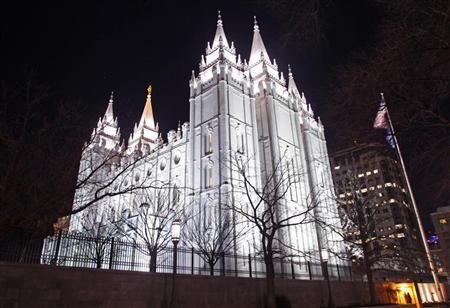Charitable Giving By State: Are Republicans More Generous Than Democrats, Or Just More Religious?

It turns out that the old Bushism about “compassionate conservatism” may not be a myth after all. In a new analysis of Internal Revenue Service tax records, the Chronicle of Philanthropy on Monday ranked U.S. cities and states by how much money their residents give to charity. The bottom line? People in red states are more generous with their green.
The study, which compared IRS data from 2012 with data from 2006, showed that the 17 most “generous” states -- as measured by the percentage of their income they donated to charity -- voted for Mitt Romney in the last presidential election. The seven states at the bottom of the list, meanwhile, voted for Barack Obama.
Exactly why is a bit of a mystery. Stacy Palmer, editor of the Chronicle of Philanthropy, said the data only showed how much money people gave away, not which types of organizations they gave to. But generally speaking, she said it’s fair to assume that political ideology aligns to some extent with ideas about charitable giving.
“Not to be too simplistic about it, but if you believe that government should take care of basic social services, then you’re going to go that way,” Palmer told International Business Times. “If you think charities should take care of things, and not government, then you’re probably going to give more generously to charity.”
A more verifiable metric, Palmer said, is the role of religion. The states that topped the Chronicle’s generosity list also tended to be the ones with the highest rate of churchgoers. “We’ve been looking at this over many different years, and we know that religion matters a lot,” she said. It could be that the faithful are generally more inclined to donate their money to charitable causes. Or, it could be that the faithful are more likely to donate money to their own churches and religious communities.
A quick look at the interactive map compiled by the Chronical reveals that the “Bible Belt” states such as Mississippi, Alabama and Georgia gave away a higher percentage of their income, while states in the Northeast, Midwest and West Coast gave less.
Utah, home to the highest concentration of Mormons in the country, was ranked as the most generous state, with residents there giving away $65.60 for every $1,000 they earned. But that figure could be a bit misleading, as much of this presumed generosity could simply reflect Mormons donating money to Church of Jesus Christ of Latter-day Saints. The LDS church takes in an estimated $7 billion annually in tithes and other donations, according to Reuters, and active members are expected to donate at least 10 percent of their income to their church.
Mississippi, which has the highest rate of churchgoers in the country according to a 2010 Gallup poll, was No. 2 on the Chronicle’s generosity list, with residents there giving away 4.99 percent of their income. Alabama, the state with the second-highest rate of churchgoers, is not far behind, with Alabamans giving away 4.81 percent of their income.
On the other end of the scale, some of the least generous states are those with the highest rates of atheists. Residents of Vermont, the state with the least church-goers according to Gallup, gave away just 2 percent of their income, according to the Chronicle. New Hampshire, meanwhile, is apparently living up to its “live free or die” motto. The state ranked at the bottom of the generosity list, with just 1.74 percent of residents giving money to charity.
Charitable giving ranked by city shows a similar trend. Salt Lake City ranked at the top of the list, followed by Memphis; Birmingham, Alabama; and Atlanta. At the bottom are Boston; San Jose, California; and Providence, Rhode Island. Hartford, Connecticut, is last.
The idea that churchgoing correlates with charitable giving is not news for people who work in the nonprofit sector, but Palmer said all hope is not lost for the concept of secular generosity. In fact, it’s on an upswing. “This year, some of the groups that deal with education, or health, or other more secular things are also seeing a surge in donations and fundraising,” she said. “I think religion is still an important piece of it, but it’s not the only explanation anymore.”
The Chronicle’s study -- dubbed “How America Gives” -- covers about 80 percent of the individual charitable donations made in 2012, and about 74 percent of those made in 2006. More details about the Chronicle’s methodology can be found here.
Got a news tip? Email me. Follow me on Twitter @christopherzara.
© Copyright IBTimes 2024. All rights reserved.






















